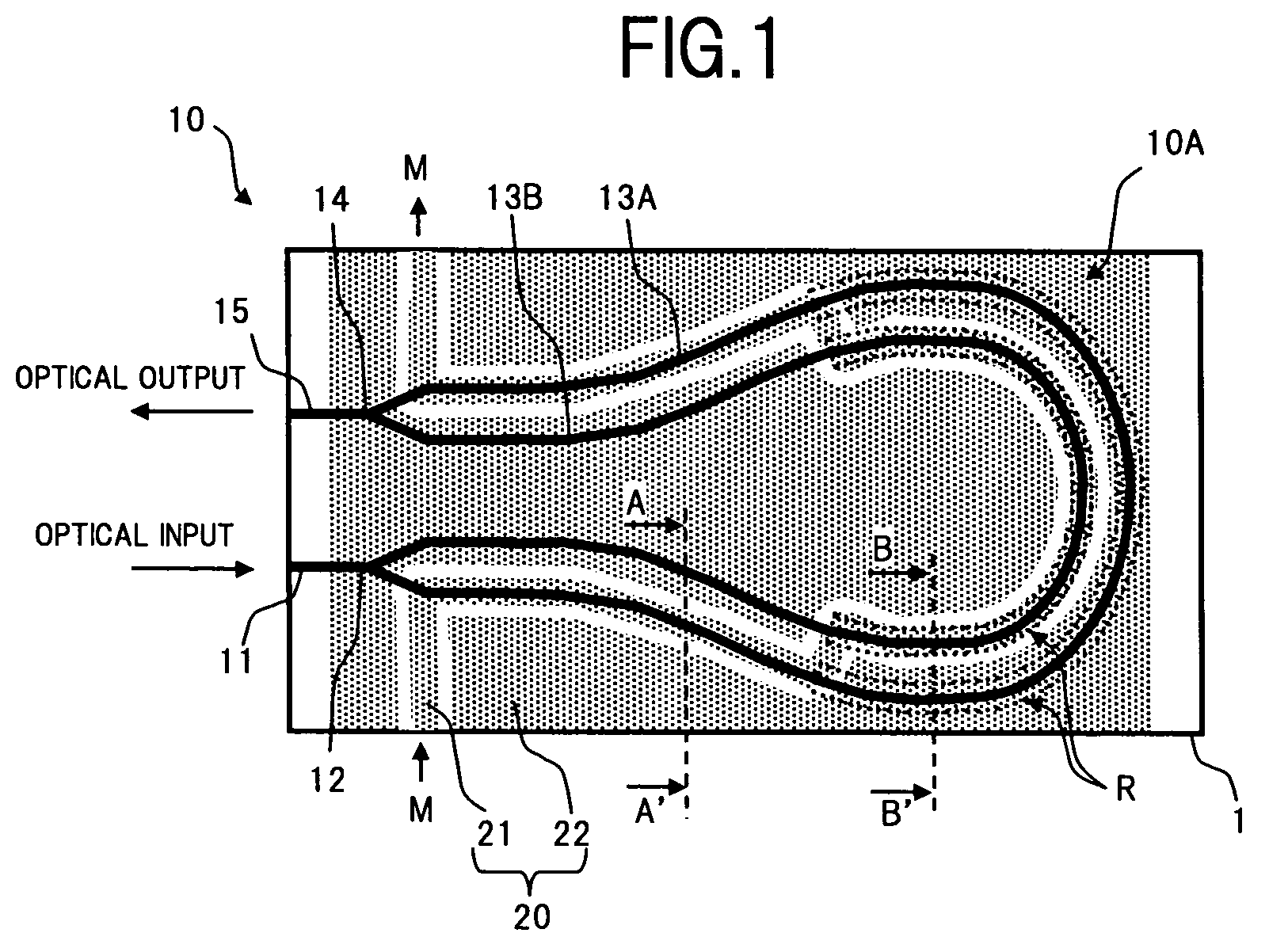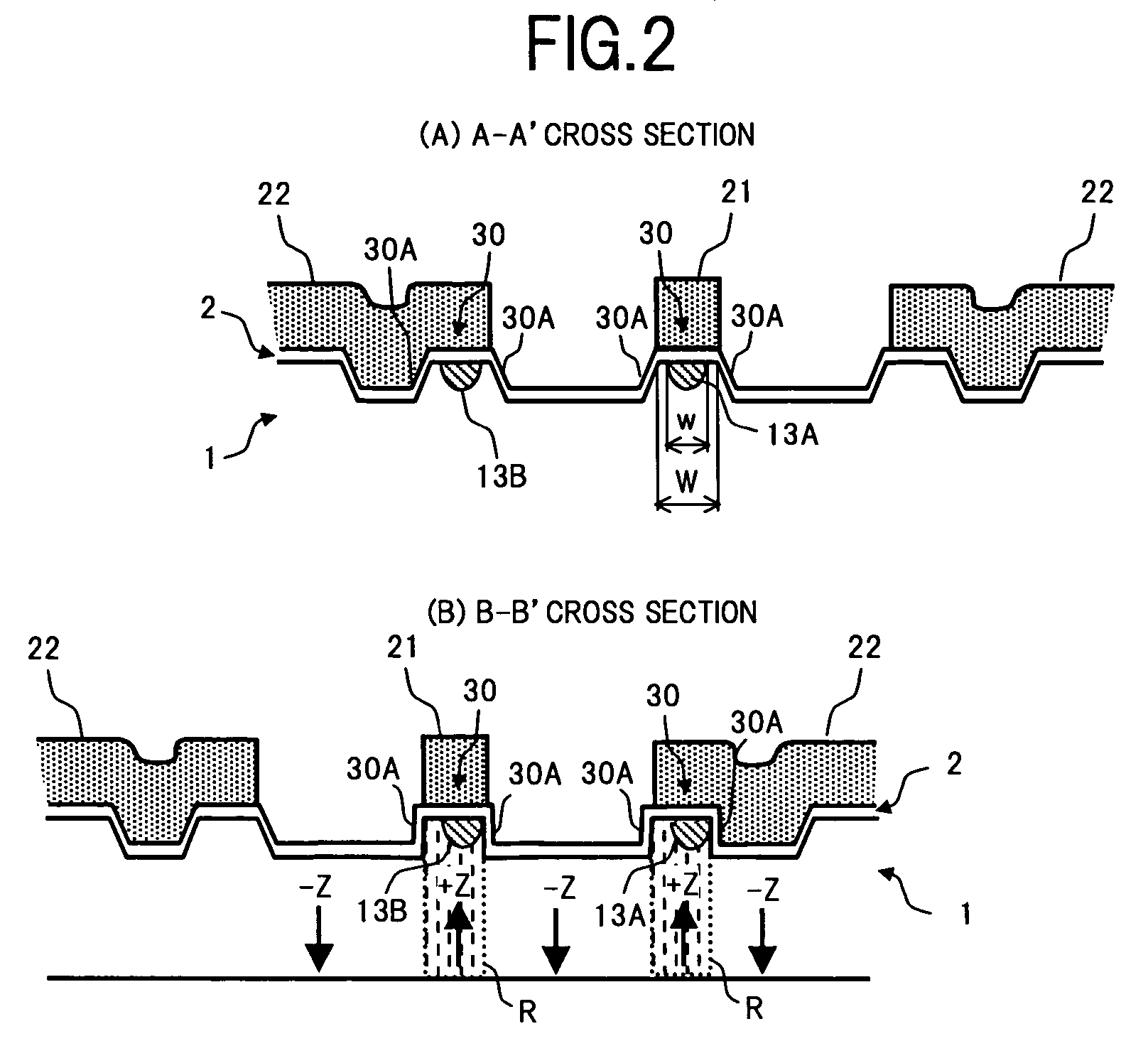Optical modulator
a modulator and optical technology, applied in the field of optical waveguide devices, can solve the problems of reducing the signal waveform after transmission, affecting the efficiency of optical modulators, so as to achieve the effect of suppressing the loss of radiation
- Summary
- Abstract
- Description
- Claims
- Application Information
AI Technical Summary
Benefits of technology
Problems solved by technology
Method used
Image
Examples
Embodiment Construction
[0033]Hereunder is a description of embodiments of implementing an optical modulator of the present invention with reference to the appended figures. Here, identical reference numerals denote identical or equivalent parts throughout all of the drawings.
[0034]FIG. 1 is a plan view showing a configuration of a Mach-Zehnder type optical modulator according to an embodiment of the present invention. Further, FIG. 2 is a diagram showing main structures of cross-sections in respective sections of FIG. 1, where (A) is a cross-sectional diagram through A–A′, and (B) is a cross-sectional diagram through B–B′.
[0035]In FIG. 1 and FIG. 2, the Mach-Zehnder type optical modulator of the present embodiment comprises a substrate 1 having an electro-optical effect, an optical waveguide 10 formed on a surface of the substrate 1, and a coplanar electrode 20 formed on the surface of the substrate 1 via a buffer layer 2.
[0036]For the substrate 1, a Z-cut lithium niobate (LiNbO3) substrate, a lithium tan...
PUM
| Property | Measurement | Unit |
|---|---|---|
| return angle | aaaaa | aaaaa |
| depth | aaaaa | aaaaa |
| width | aaaaa | aaaaa |
Abstract
Description
Claims
Application Information
 Login to View More
Login to View More - R&D
- Intellectual Property
- Life Sciences
- Materials
- Tech Scout
- Unparalleled Data Quality
- Higher Quality Content
- 60% Fewer Hallucinations
Browse by: Latest US Patents, China's latest patents, Technical Efficacy Thesaurus, Application Domain, Technology Topic, Popular Technical Reports.
© 2025 PatSnap. All rights reserved.Legal|Privacy policy|Modern Slavery Act Transparency Statement|Sitemap|About US| Contact US: help@patsnap.com



